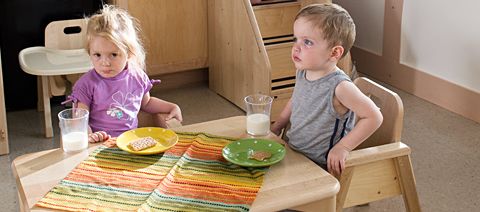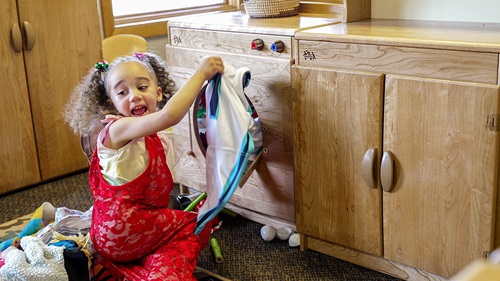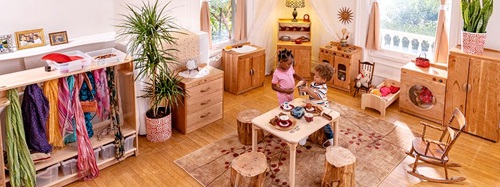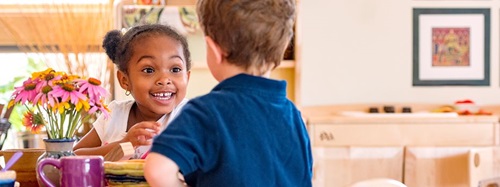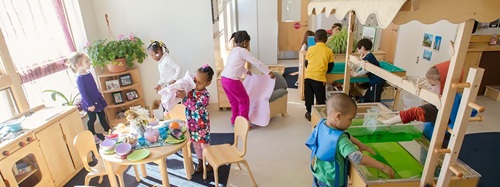Five Ways to Make Your Classroom Homey
| December 2011These days, everyone in child care is talking about how important the classroom environment is to children’s learning, even calling it “the third teacher.” And, of course, it’s true. Classroom environments that are thoughtfully designed encourage social learning and cognitive development.
Like all teachers, I want my classroom to be a wonderful place for children to learn. I’ve come to the conclusion that the best way to facilitate learning is to create a space where children feel relaxed and have a sense of belonging.
Volumes have been written on this subject, but here are 5 simple ways I’ve found to help make my classroom a secure and welcoming place for children, many of whom spend more daylight hours with me than in their own home.
1. Does it look like your home? Take a look around your classroom, as if for the first time. Now close your eyes and think of your home. Ask yourself, “Would I put that on the wall in my home?” If the answer is “no,” it’s a pretty good indication it doesn’t belong in your child care setting either. Be brave - de-clutter! Take something down! Even removing a few items can make a big difference. A few intriguing objects tastefully displayed or thoughtfully placed invite exploration and discovery.
2. Personalized spaces for each child. Second, I’ve found that when children have a place that is “theirs” it gives them a sense of belonging. New children feel included and secure. So each child in my care has a designated place to hang her artwork. She chooses what to hang and when. Each child also has their own outdoor place – under a tree or by a special rock. Most use it as a place to make “fairy gardens” or other imaginative activities. The children absolutely love it, and I’ve found that they respect each other’s places.
3. Celebrate collaborations. A child who feels connected to the group – that he is making a meaningful contribution to the whole – is a happy child. Having a designated place for collaborative work builds connections and a sense of belonging in the classroom community. In my classroom there is always some type of group collaboration underway, and very often it’s creative expression can be found on our art board. Recently, we have been thinking about light, and the children made beautiful candle paintings. Having a designated place for the work of children helps them understand their work is respected and valued.
4. Mealtimes are special. We eat family-style, and I try to make mealtimes like they would be in my home. There’s usually a small bouquet of flowers on a small cloth in the center of the table, or sometimes candles. I turn on “cozy” lights to encourage a subdued atmosphere and help communicate to children that meals are special times where we enjoy good food and each other’s company. A lamp hung above the table, or a string of Christmas tree lights is all it takes.
5. Nature is a healer. It’s a known fact that exposure to nature has a calming, healing effect on people of all ages. I connect my children with nature as much as I can. On our daily walks, each child brings a paper bag to collect nature items. Once you start looking, there are so many possibilities: seed pods, pine cones, interesting grasses or sticks. Back in our yard, the children take their findings to “their” place in the yard. You’d never believe how much they enjoy it! I also have a nature tray in the room where special or delicate items, such as a fallen birds nest or monarch butterfly, are placed.
The important thing is to take one step at a time. Making one small improvement in your room without breaking the bank or getting the approval of the board of education is better than getting bogged down while trying to “do it all.” Good luck, and don’t forget: more important than any room arrangement is the love you show to children!

